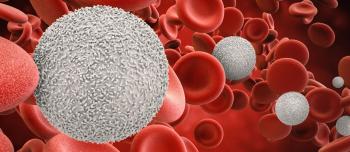In a recently published paper, an international team of researchers report effectively administering gene therapy to three dogs with hemophilia B in an ongoing study. The report, “Liver-Directed Lentiviral Gene Therapy in a Dog Model of Hemophilia B,” was published March 4, 2015, in the journal Science Translational Medicine. The lead author of the paper was Luigi Naldini, MD, PhD, director of the San Raffaele Telethon Institute for Gene Therapy at the San Raffaele Scientific Institute in Milan, Italy.
The three dogs in the study were administered the gene therapy either through direct injection into the liver, a primary source of clotting factor protein production, or intravenously. The therapy was housed in repurposed retroviruses called lentiviral vectors. These vectors act as vehicles, carrying customized genetic material to elicit the production of factor IX (FIX). One advantage in using lentiviruses is that a majority of patients do not generate antibodies to this type of vector, avoiding an immune response that would otherwise render the treatment ineffective. Another benefit of using lentiviral vectors is their large size, enabling them to deliver greater concentrations of the FIX gene to produce a more optimal therapeutic effect.
Three years after administering the treatment, Naldini and his colleagues report significant symptomatic improvement. Prior to receiving the therapy, the dogs experienced approximately five spontaneous bleeds per year. In contrast, in the three years since receiving therapy, the dogs have averaged none to 1 bleed per year. This notable decrease in spontaneous bleeding events was achieved because the gene therapy boosted FIX generation in the dogs from virtually 0 to 1%-3%. This seemingly modest increase was enough to dramatically lower bleeding rates.
“The result was stunning,” said Timothy Nichols, MD, director of the Francis Owen Blood Research Laboratory at the University of North Carolina School of Medicine and co-senior author of the paper. “Just a small amount of new factor IX necessary for proper clotting produced a major reduction in bleeding events. It was extraordinarily powerful.”
Investigators have also reported no harmful side effects. Safety being a primary concern, Naldini and his team performed additional studies in types of mice that are more likely to develop complications from lentiviruses, such as malignancies. No hazardous responses to the therapy were reported. “Considering the mouse model data and the absence of detectable genotoxicity during long-term expression in the hemophilia B dogs, the lentiviral vectors have a very encouraging safety profile in this case,” said Nichols.
Ideally, Naldini, Nichols and their team would like to see FIX levels increased to 5%-10% to essentially eradicate spontaneous bleeding in patients with hemophilia B. To reach this endpoint, several years of additional investigation, including larger animal studies and eventual human clinical trials, need to occur.
Source: ScienceDaily, March 12, 2015





